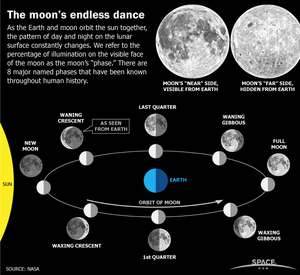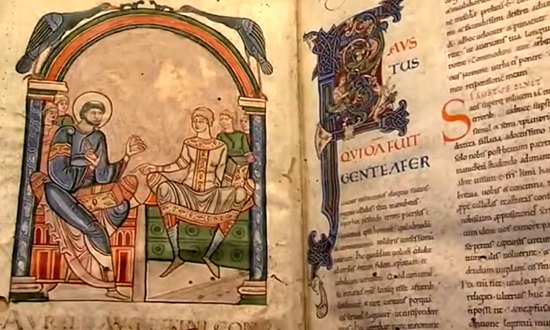|
Creato da: diegobaratono il 02/05/2008
NEW ARCHAEOLOGY, SCIENZA, ARCHEOLOGIA SPERIMENTALE, RICERCHE ARCHEOLOGICHE D'AVANGUARDIA, NEWS DAL MONDO, EGITTOLOGIA, EGYPTOLOGY, ARCHEOASTRONOMIA, PALEOGEOMETRIA, CRIPTOGEOMETRIA, CULTURAL GEOMETRY, GEOMETRIA CULTURALE, ARCHITETTURE SACRE
|
Area personale- Login
TagCerca in questo BlogMenuCitazioni nei Blog Amici: 8 Contatta l'autore
Chi può scrivere sul blog
Solo l'autore può pubblicare messaggi in questo Blog e tutti possono pubblicare commenti.
I messaggi e i commenti sono moderati dall'autore del blog, verranno verificati e pubblicati a sua discrezione. LINK DA CONSULTARE - LiriciGreci.org - Egittophilia - Egittologia.net - Pyramidales - WORLDTRUTH - Bibliotheca Alexandrina - Osservatorio virtuale - INAF-Osservatorio Astronomico Torino - Giza Plateau Mapping Project - AERA, Ancient Egypt Research Associates - Il Museo Egizio di Torino - Il Museo Egizio del Cairo - Ecco il Louvre - Ecco il British Museum - Musei Vaticani - Egyptians Gods - Previsioni meteo - Insolazione - California Institute of Technology - Astrocaltech - Geologicaltech - A tutto Caltech - Massachussetts Institute of Tecnology - Ecco gli Uffizi - Istituto Nazionale di Geofisica e Vulcanologia - Terremoti in tempo reale - MONITORAGGIO TERREMOTI REAL TIME - ESA (Agenzia Spaziale Europea) - NASA - LIETI CALICI - LIETI CALICI II - Science - ScienceNews - C.N.R. (Consiglio Nazionale delle Ricerche) - Moon Phases - Ordine Cisterciense - Abbazia di Casamari - Abbazia di Fossanova - Abbazia di Staffarda - Abbazia di Morimondo - Pompei - Ercolano - Amalfi - Tutto Darwin - Tutto Lyell - Ordine Templare - Politecnico di Torino - Università Amedeo Avogadro di Alessandria - Università di Oxford - Università di Cambridge - Isaac Newton - Albert Einstein - A tutta birra - A tutta birra II - Tutto Mendel - LIETI CALICI III - Abbazia di Tiglieto - Abbazia di Chiaravalle - The heritage - key - CERN European Organization for Nuclear Research - Science Daily - A caccia di meteore ... - World Digital Library - Library of Congress - Antikitera News - BIBLIOTECA DIGITALE ITALIANA - Il giornale di Galileo - Galileo Galilei - Enciclopedia Egittologica on line - Scienze cartografiche - El - Giza pyramids - Caravaggio - REUTERSNEWS - CNNNEWS - ANSANEWS - English Heritage - NATURE - ENCICLOPEDIA TRECCANI ONLINE - ENCICLOPEDIA BRITANNICA ONLINE - EGYPTIAN ARCHAEOLOGY - PRINCETON UNIVERSITY - NationalGeographicNews - RELIGIONI A CONFRONTO - USHEBTIS EGIPCIOS - Talking Pyramids - LIETI CALICI IV - Sito di ...vino - La Banca del Vino - MATHEMATICA ON LINE - ARKEOMOUNT - Egyptians Gods II - TESTI DELLE PIRAMIDI - DAVID ROBERTS - COLLEZIONI INTERNAZIONALI ON - LINE - LIETI CALICI V - GEOMETRIA SACRA - IPSE DIXIT - THE GRIFFITH INSTITUTE - ARCHIVIO SEGRETO VATICANO - ABBINAMENTI VINO CIBO |
Messaggi di Gennaio 2017
Post n°1355 pubblicato il 12 Gennaio 2017 da diegobaratono
DA: "space.com" January Full Moon 2017: When to See the 'Full Wolf Moon' The full moon of January 2017 is blazing brightly in the skies tonight (Jan. 11). The moon technically reaches its full phase tomorrow morning (Jan. 12) at 6:34 a.m. EST (1134 GMT), but skywatchers can get an eyeful of an apparently full lunar orb both tonight and tomorrow night. The Slooh Community Observatory will air a live webcast about the January full moon at Slooh.com this evening at 8:30 p.m. EST (0130 on Thursday). You can also watch the moon webcast here on Space.com, courtesy of Slooh. [The Full Moon: Why It Happens (Video)]  See the moon phases, and the difference between a waxing and waning crescent or gibbous moon, in this Space.com infographic about the lunar cycle each month. See the full infographic. Credit: Karl Tate, SPACE.com All of the year's full moons have names, which were given to them by Native American tribes living in the eastern and northern United States. January's full moon is known primarily as the "Wolf Moon," according to the Farmers' Almanac: "Amid the cold and deep snows of midwinter, the wolf packs howled hungrily outside Indian villages. Thus, the name for January’s full moon. Sometimes it was also referred to as the Old Moon, or the Moon After Yule. Some called it the Full Snow Moon, but most tribes applied that name to the next moon." In the Southern Hemisphere, the January full moon is known as the Hay Moon, Buck Moon, Thunder Moon or Mead Moon, according to Earthsky.org. A full moon occurs about every month (every 29.53 days, to be precise), when the Earth, moon and sun line up, with Earth in the middle. In this configuration, the lunar near side — the only face skywatchers ever see, because Earth and the moon are tidally locked — is fully illuminated. Lunar eclipses can occur only when the moon is full. Solar eclipses, on the other hand, happen only during the moon's "new" phase, when the moon gets between the sun and Earth. (The moon's orbit is tilted 5 degrees relative to that of Earth; if the two bodies orbited in exactly the same plane, lunar and solar eclipses would happen every month.) You can see many details of the lunar surface even without binoculars or a telescope. Large dark regions known as maria, for example, are easily visible to the unaided eye. These are vast plains of basaltic rock, the cooled remnants of ancient lava flows. Their name means "seas" in Latin; early astronomers thought they were huge reservoirs of liquid water.
Post n°1354 pubblicato il 09 Gennaio 2017 da diegobaratono
DA: "france-pittoresque.com" INFORMAZIONE: PER LE IMMAGINI: Les manuscrits du Mont Saint-Michel bientôt accessibles à tous sur internet. Histoire, magazine et patrimoine Manuscrits du Mont Saint-Michel : bientôt accessibles à tous sur internet (Source : France Télévisions) Publié / Mis à jour le JEUDI 29 DÉCEMBRE 2016, par LA RÉDACTION Ils sont considérés comme les véritables trésors du Mont Saint-Michel. 199 manuscrits issus de l’ancienne bibliothèque de l’abbaye sont en cours de numérisation. Une opération qui a débuté il y a une dizaine d’années et qui est sur le point de se terminer. Courant 2017, ces documents précieux seront accessibles à tous via une bibliothèque virtuelle hébergée par le site de l’université de Caen. Tels les moines copistes du Moyen-Age, ils fixent dans le temps les trésors du passé. Page par page, les 199 manuscrits du Mont Saint-Michel sont numérisés afin d’alimenter la future bibliothèque virtuelle imaginée par des chercheurs de l’université de Caen en partenariat avec la ville d’Avranches. Depuis 1791 et la confiscation par les autorités révolutionnaires des livres appartenant au clergé, ces manuscrits ont été conservés par la cité normande située juste en face de la Merveille. Les ouvrages les plus anciens datent du VIIIe siècle, les plus récents du XIVe.  Manuscrits du Mont Saint-Michel : des enluminures exceptionnelles. © France Télévisions Enluminures magnifiques, textes religieux mais pas seulement. La bibliothèque rassemblée par les moines bénédictins à partir du Xe siècle comporte notamment des ouvrages d’auteurs païens comme Cicéron, Platon ou Aristote. Une richesse qui en fait au Moyen Age l’une des plus grandes bibliothèques d’Occident. Réorganisée au XVIIe siècle par les Mauristes (religieux de la congrégation de Saint-Maur), la collection est déménagée à Avranches sous la Révolution. Depuis, la mise en valeur de ce patrimoine a été continue. De la création d’une salle spécialement dédiée à l’hôtel de ville d’Avranches en 1850, jusqu’à la création en 2006 du Scriptorial qui expose en permanence et à tour de rôle une quinzaine de ces manuscrits, l’accès du public à ces trésors reste une priorité dont l’aboutissement sera, en 2017, la mise en ligne de la Bibliothèque virtuelle du Mont Saint-Michel. Désormais chacun, du chercheur au simple particulier, pourra consulter ce savoir millénaire. Sophie Granel France Télévisions Accédez à l’article source
|
||||||||

